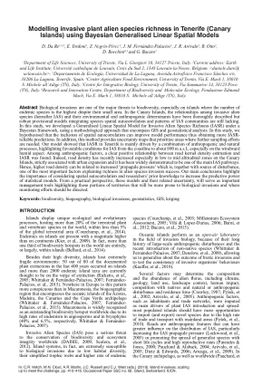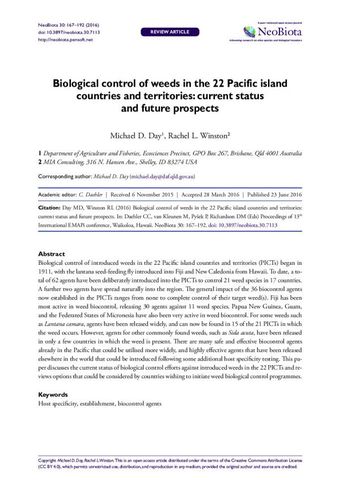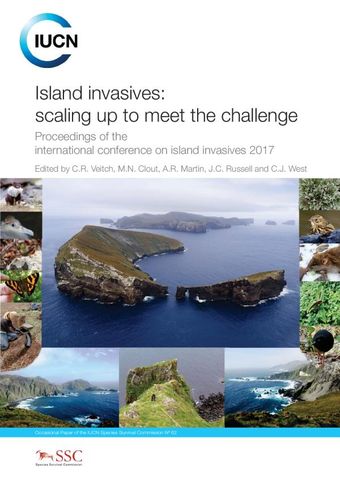Modelling invasive plant alien species richness in Tenerife (Canary Islands) using Bayesian Generalised Linear Spatial Models
- Description:
- Biological invasions are one of the major threats to biodiversity, especially on islands where the number of endemic species is the highest despite their small area. In the Canary Islands, the relationships among invasive alien species (hereafter IAS) and their environmental and anthropogenic determinants have been thoroughly described but robust provisional models integrating species spatial autocorrelation and patterns of IAS communities are still lacking. In this study, we developed a Generalised Linear Spatial Model for Invasive Alien Species Richness (IASR) under a Bayesian framework, using a methodological approach that encompass GIS and geostatistical analysis. In this study, we hypothesised that the inclusion of spatial autocorrelation can improve model performance thus obtaining more IASR-reliable predictions. In addition, this method provides uncertainty maps that prioritize areas where further sampling e?orts are needed. Our model showed that IASR in Tenerife is mainly driven by a combination of anthropogenic and natural processes, highlighting favourable conditions for IAS from the coastline to about 800 m a.s.l., especially on the windward humid aspect. Among anthropogenic factors, a clear positive relationship between road kernel density estimation and IASR was found. Indeed, road density has recently increased especially in low to mid altitudinal zones on the Canary Islands, strictly associated with urban expansion and it has been widely demonstrated to be one of the main IAS pathways. Hence, higher road density can be related to increased propagule pressure which is, together with source of disturbance, one of the most important factors explaining richness in alien species invasion success. Our main conclusions highlight the importance of considering spatial autocorrelation and researchers prior knowledge to increase the predictive power of statistical models. From a practical perspective, these models and their related uncertainty, will serve as important management tools highlighting those portions of territories that will be more prone to biological invasions and where monitoring e? orts should be directed.
- Display date:
- 2019
- Collections:
- Secretariat of the Pacific Regional Environment Programme (SPREP)
- Publisher:
- International Union for Nature Conservation (IUCN)
- Content partner:
- Secretariat of the Pacific Regional Environment Programme (SPREP)
- Availability:
- Not specified
-
Copyright status: All rights reservedFind out more about what you are able to do with this itemThis item is all rights reserved, with means you'll have to get permission from Secretariat of the Pacific Regional Environment Programme (SPREP) before using it. For more information, please see our use and reuse page.What can I do with this item?Non-infringing useNZ copyright law does not prevent every use of a copyright work, and this item may be hosted by an international institute or organisation. You should consider what you can and cannot do with a copyright work.No sharingYou may not copy and/or share this item with others without further permission. This includes posting it on your blog, using it in a presentation, or any other public use.No modifyingYou are not allowed to adapt or remix this item into any other works.No commercial useYou may not use this item commercially.
Related items
Welcome and warm Pasifik greetings
The information on this site has been gathered from our content partners.
The names, terms, and labels that we present on the site may contain images or voices of deceased persons and may also reflect the bias, norms, and perspective of the period of time in which they were created. We accept that these may not be appropriate today.
If you have any concerns or questions about an item, please contact us.


